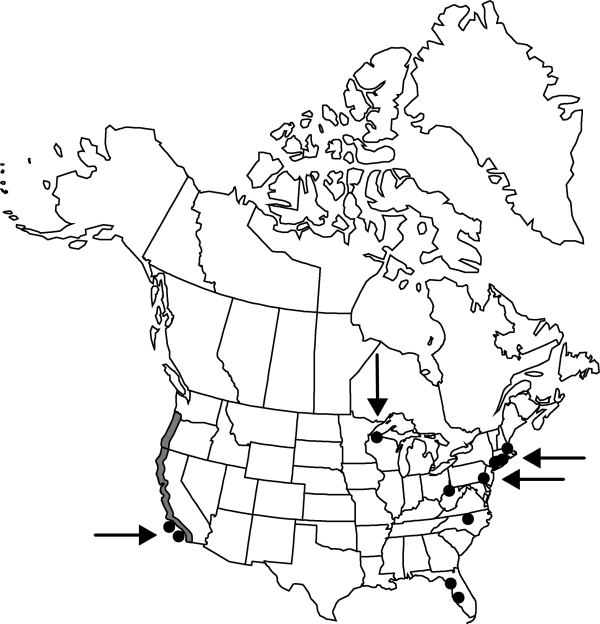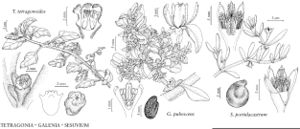Tetragonia tetragonioides
Revis. Gen. Pl. 1: 264. 1891.
Basionym: Demidovia tetragonioides Pallas
Synonyms: Tetragonia expansa Murray
Treatment appears in FNA Volume 4. Treatment on page 78.
Revision as of 17:26, 18 September 2019 by FNA>Volume Importer
Stems mat-forming, 3–14 dm. Leaves 1–10 × 5–5 cm; petiole 1–3 cm, winged; blade pale green abaxially, dark green adaxially, midvein and lateral veins raised abaxially, ovate-rhombic to triangular, base truncate, papillate with larger papillae abaxially. Inflorescences: peduncle to 2 mm. Flowers sometimes unisexual; calyx lobes spreading, yellow, ovate to half orbiculate, 2 mm; stamens clustered or scattered. Fruits turbinate, 8–12 mm; horns 4–6. Seeds smooth. 2n = 32.
Phenology: Flowering spring–fall.
Habitat: Sand dunes, bluffs, margins of coastal wetlands, disturbed areas
Elevation: 0-500 m
Distribution

Calif., Conn., Fla., Mass., N.C., Oreg., Pa., W.Va., Wis., Mexico, South America, e Asia, Pacific Islands (New Zealand), Australia.
Discussion
Tetragonia tetragonioides is cultivated as a vegetable.
Selected References
None.
Lower Taxa
None.
